Abstract
Eighty adult patients with microbiologically demonstrated staphylococcal infections were included in a comparative trial of cefamandole and cefamandole plus tobramycin. Patients with cefamandole-resistant pathogens were treated with vancomycin, if the initial therapy consisted of cefamandole, but were continued on cefamandole plus tobramycin if already started on that combination. Of the patients infected with cefamandole-susceptible strains, 91% (20/22) responded favorably to treatment with cefamandole alone, and 88% (30/34) responded favorably to cefamandole plus tobramycin. Of the patients infected with cefamandole-resistant staphylococci, 70% (7/10) responded to treatment with cefamandole plus tobramycin, and 86% (12/14) responded to treatment with vancomycin, even though vancomycin therapy was started 24 to 48 h later than cefamandole-plus-tobramycin therapy. No major side effects were observed; however, cefamandole plus tobramycin was associated with a rise in the serum creatinine level in 11% (4/44) of the patients. The bactericidal activity of the serum in cefamandole-treated patients and in cefamandole-plus-tobramycin-treated patients was identical against cefamandole-susceptible strains. Against cefamandole-resistant strains, 87% of the vancomycin-containing sera were bactericidal at a dilution of 1:8, whereas only 57% of the cefamandole-plus-tobramycin-containing sera were active at that dilution.
Full text
PDF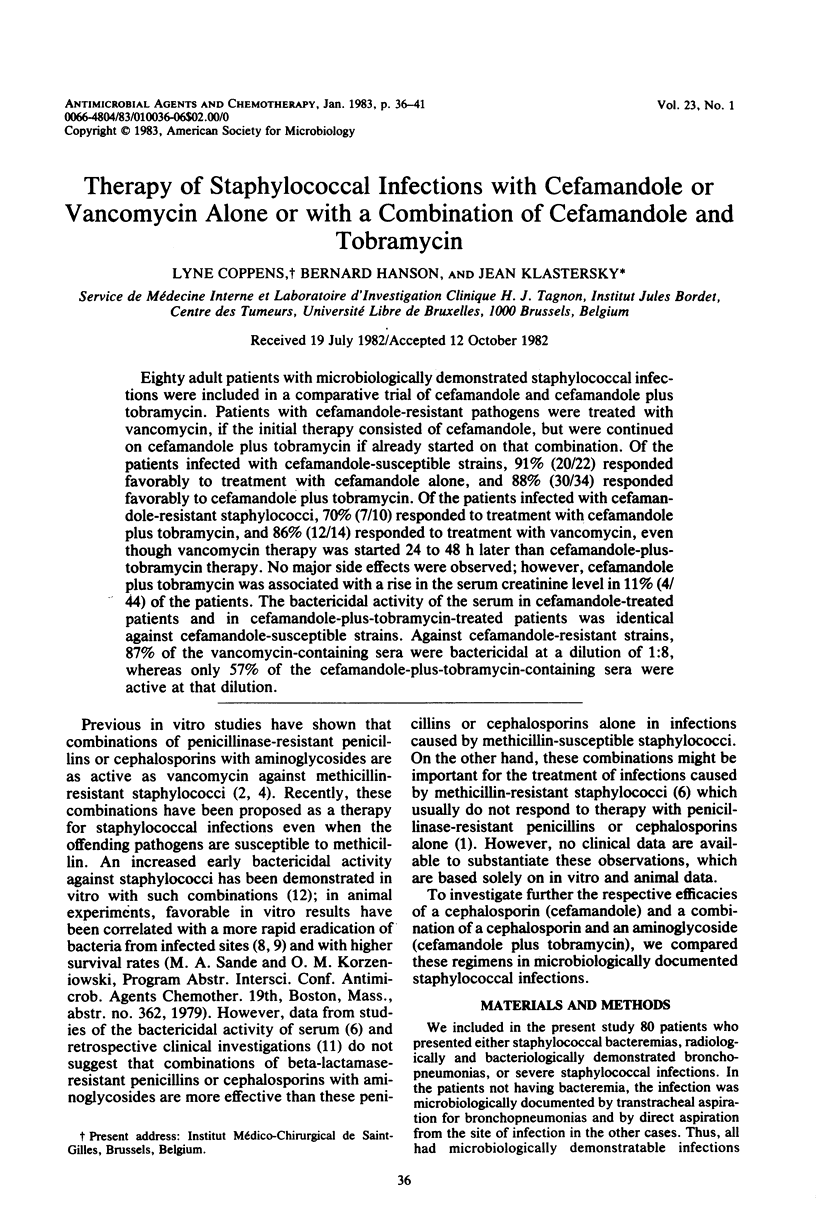
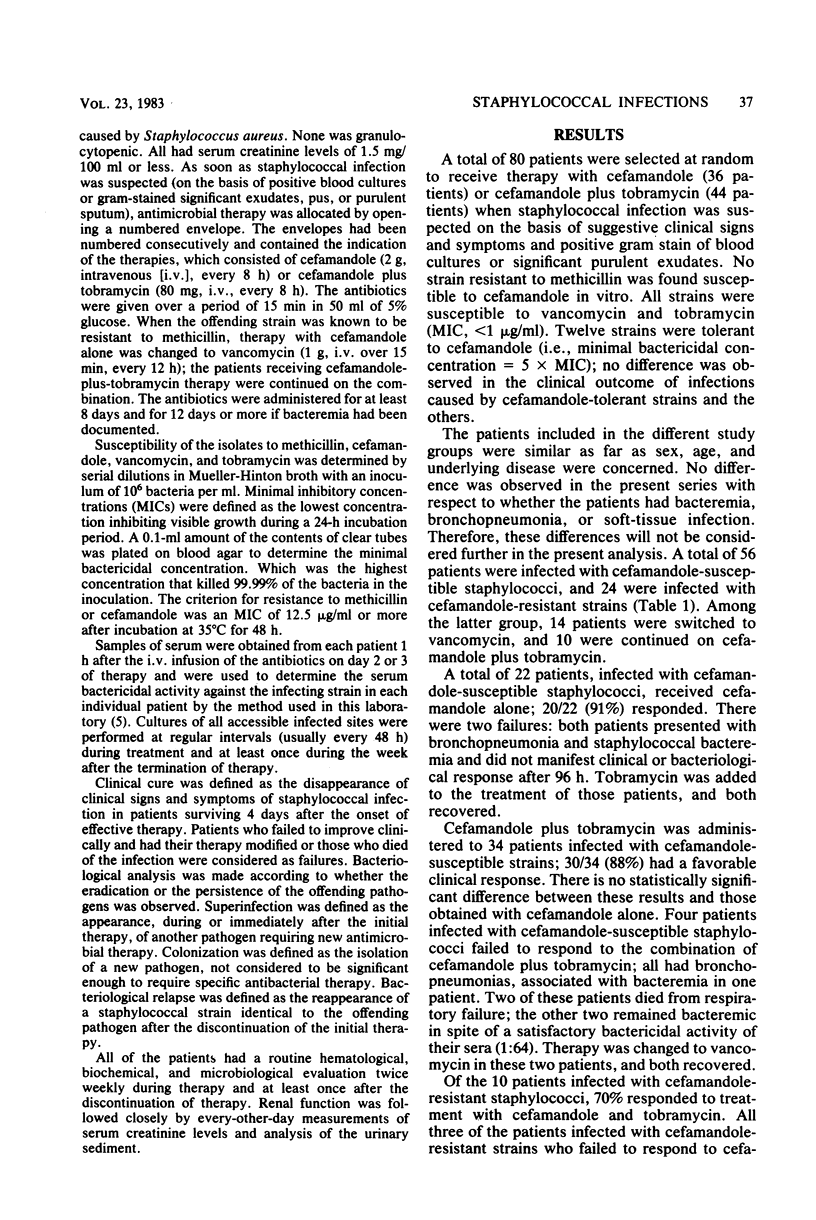
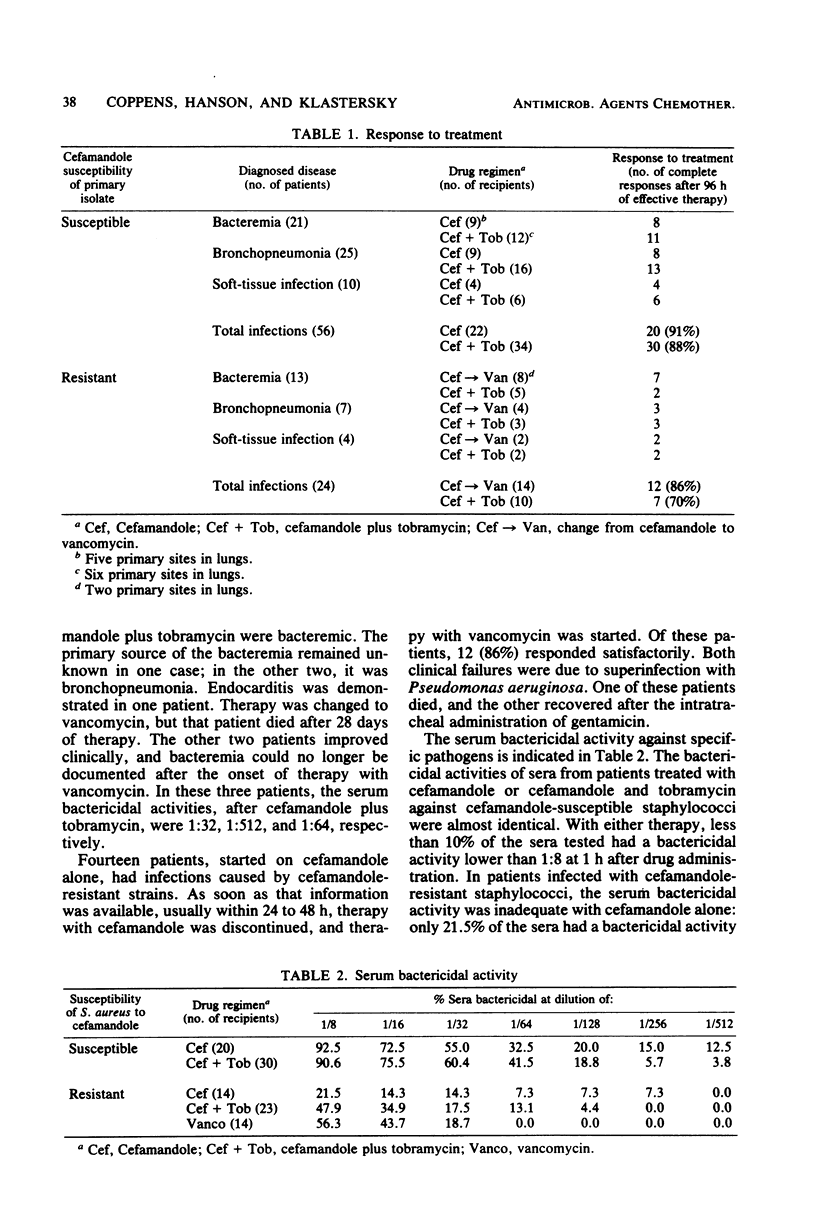
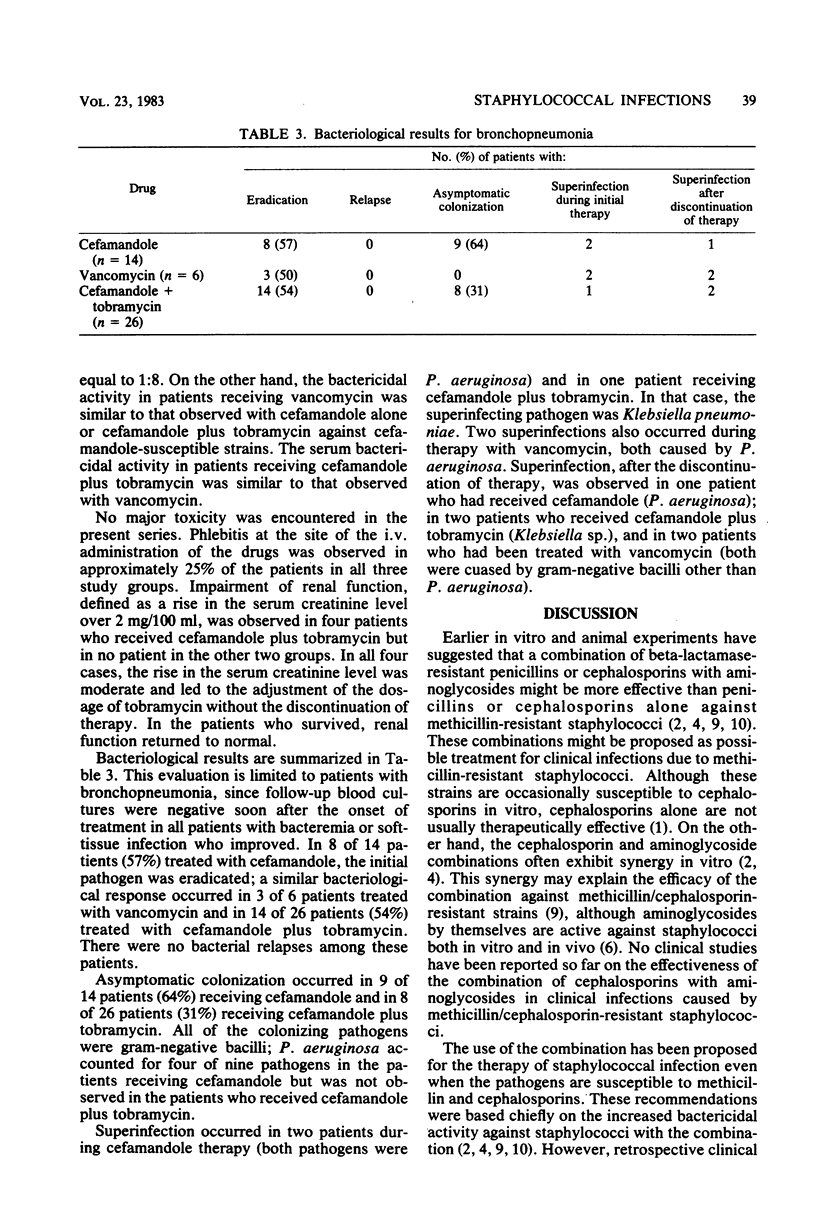
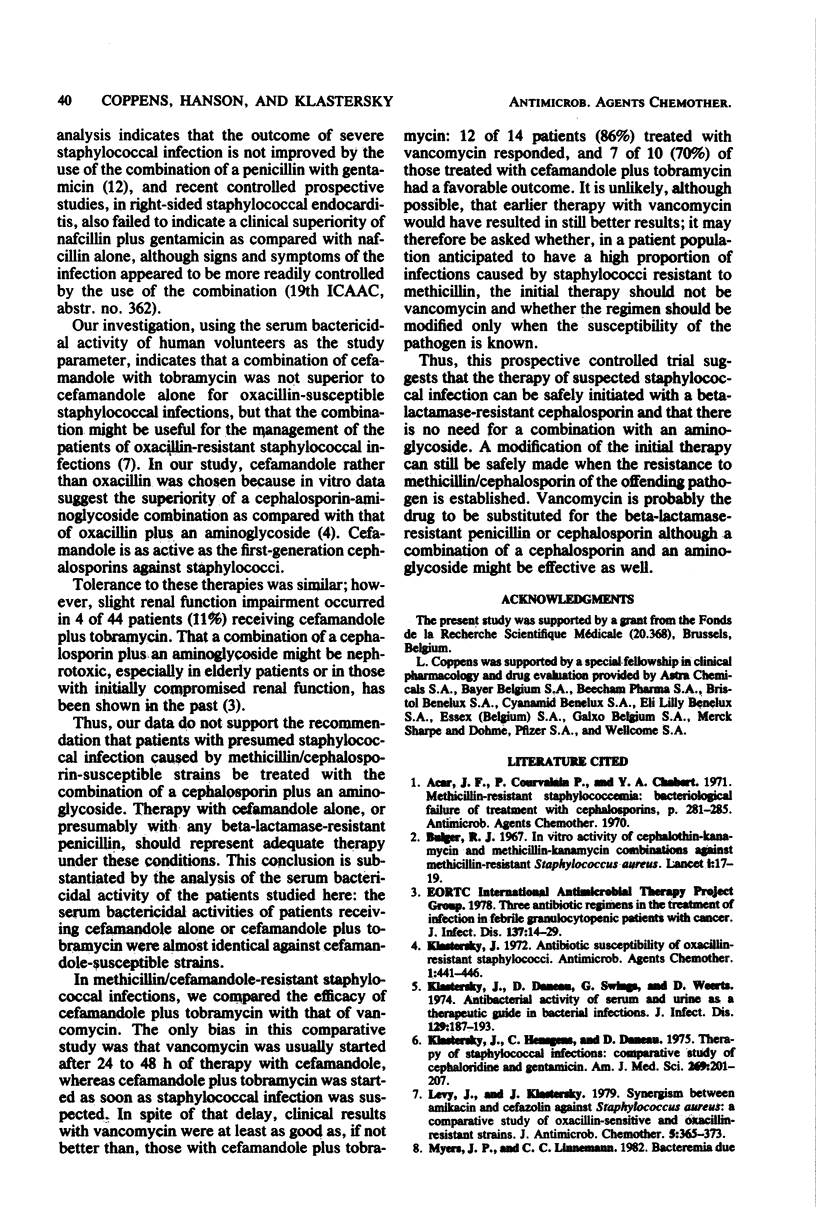
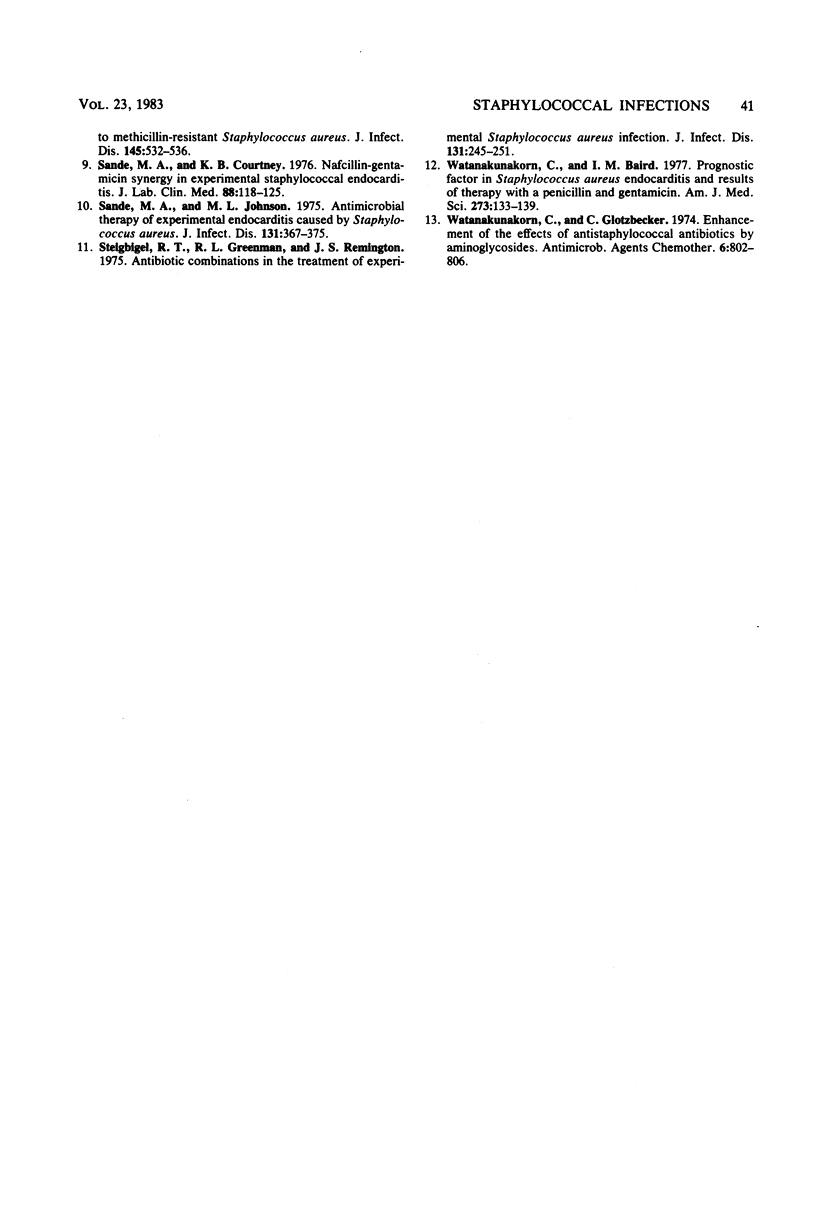
Selected References
These references are in PubMed. This may not be the complete list of references from this article.
- Levy J., Klastersky J. Synergism between amikacin and cefazolin against Staphylococcus aureus: a comparative study of oxacillin-sensitive and oxacillin-resistant strains. J Antimicrob Chemother. 1979 Jul;5(4):365–373. doi: 10.1093/jac/5.4.365. [DOI] [PubMed] [Google Scholar]
- Myers J. P., Linnemann C. C., Jr Bacteremia due to methicillin-resistant Staphylococcus aureus. J Infect Dis. 1982 Apr;145(4):532–536. doi: 10.1093/infdis/145.4.532. [DOI] [PubMed] [Google Scholar]
- Sande M. A., Courtney K. B. Nafcillin-gentamicin synergism in experimental staphylococcal endocarditis. J Lab Clin Med. 1976 Jul;88(1):118–124. [PubMed] [Google Scholar]
- Sande M. A., Johnson M. L. Antimicrobial therapy of experimental endocarditis caused by Staphylococcus aureus. J Infect Dis. 1975 Apr;131(4):367–375. doi: 10.1093/infdis/131.4.367. [DOI] [PubMed] [Google Scholar]
- Steigbigel R. T., Greenman R. L., Remington J. S. Antibiotic combinations in the treatment of experimental Staphylococcus aureus infection. J Infect Dis. 1975 Mar;131(3):245–251. doi: 10.1093/infdis/131.3.245. [DOI] [PubMed] [Google Scholar]
- Watanakunakorm C., Glotzbecker C. Enhancement of the effects of anti-staphylococcal antibiotics by aminoglycosides. Antimicrob Agents Chemother. 1974 Dec;6(6):802–806. doi: 10.1128/aac.6.6.802. [DOI] [PMC free article] [PubMed] [Google Scholar]
- Watanakunakorn C., Baird I. M. Prognostic factors in Staphylococcus aureus endocarditis and results of therapy with a penicillin and gentamicin. Am J Med Sci. 1977 Mar-Apr;273(2):133–139. doi: 10.1097/00000441-197703000-00002. [DOI] [PubMed] [Google Scholar]


